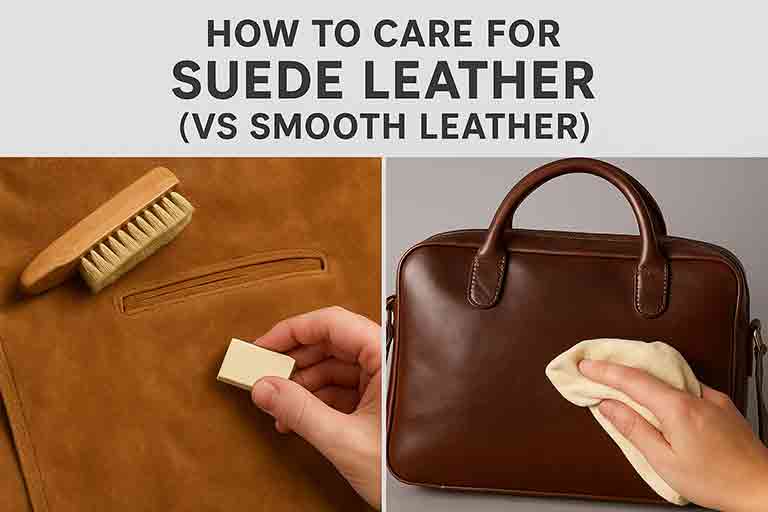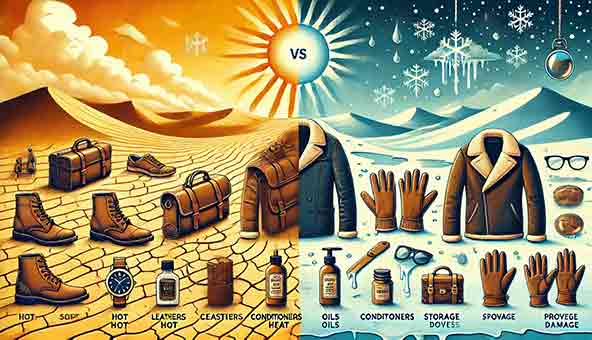
Top 7 Leather Care Mistakes and How to Avoid Them
, by Syed Khawar Bukhari, 6 min reading time

, by Syed Khawar Bukhari, 6 min reading time
Leather can last for decades if you take care of it. However, many people unintentionally shorten their lifespan by making small mistakes. A cracked purse, a faded jacket, or a stretched-out wallet often comes down to habits that are easy to fix.
If you own leather goods and want them to age gracefully, here are seven common mistakes to avoid and what to do instead.
Leather collects dust, oil, and grime even if it doesn't look dirty at first glance. Over time, these particles can dull the finish, weaken the fibers, and make cleaning stains more complicated.
Avoid this by:
Wiping down leather weekly with a dry microfiber cloth
Using a vacuum brush attachment to remove debris from seams or corners gently
Deep-cleaning every few months with a pH-balanced leather cleaner
Avoiding harsh scrubbing, which can scratch the surface
Not all cleaning products are safe for leather, especially household cleaners like vinegar, baby wipes, and alcohol-based solutions. These can dry out leather and ruin the finish, and some even cause discoloration.
How to avoid it: Choose cleaners made specifically for leather and look for pH-balanced formulas. You should also always apply the product to a cloth rather than directly to the leather. For safety, spot test on an inconspicuous area before full application.
Leather needs moisture to stay supple. If it is never conditioned, it will eventually become stiff, brittle, and prone to cracks. On the other hand, over-conditioning can clog pores, attract dust, and leave a greasy feel.
How to avoid it: Condition your leather every few months, depending on the item, usage, and climate. A little goes a long way, so apply a small amount with a soft cloth, allow it to absorb, and gently buff the surface.
|
Leather Item |
Dry Climate |
Humid Climate |
Notes |
|
Handbags and Shoes |
Every 3–4 months |
Every 6 months |
Light layers only, buff after drying |
|
Jackets |
Every 6 months |
Once a year |
Hang on wide padded hangers |
|
Sofas or Chairs |
Every 4–6 months |
Every 6–8 months |
Test a small spot before applying |
|
Belts and Wallets |
Every 6 months |
Every 8–12 months |
Apply sparingly |
You can digress from the calendar if your leather starts looking dull. For example, you can condition a leather vest if its surface is already feeling rough.
Remember this: leather doesn't handle extremes well. Water can leave stains and warp its shape, while direct heat pulls out the natural oils, which makes the material brittle. Sunlight also fades color and weakens structure over time.
You can protect your leather by:
Keeping it away from radiators, heaters, and direct sunlight
Blotting moisture gently with a clean cloth—never rubbing
Letting wet leather air dry at room temperature
Using tissue paper to help shoes and bags retain their shape during drying
Reconditioning once dry to restore flexibility
Stuffing leather items into cramped closets, sealing them in plastic bags, or leaving them in humid areas can cause serious damage. Leather needs to breathe. Otherwise, you risk mold, permanent creases, or loss of shape.
How to avoid it: Store leather in a cool, dry space with good airflow and use cloth dust bags instead of plastic. For jackets, hang them on wide hangers to prevent shoulder creases, especially for leather jackets you wear on bikes. For bags and shoes, stuff them lightly with acid-free paper. And as a general rule, give items enough space so they’re not crushed or bent.
Treating every leather item the same way is a common mistake that often leads to irreversible damage. Using a cleaner or brush that works well on smooth leather could ruin the delicate nap of suede or cause blotching on nubuck.
Suede and nubuck are more porous and absorbent, making them vulnerable to moisture and oil. They require special brushes and dry-cleaning methods rather than conditioners or balms. In contrast, full-grain and top-grain leather benefit from conditioning creams and light polishing to maintain their finish.
Always read product labels if you're unsure about your item’s composition. When possible, invest in cleaners and protectants that match the specific leather type. This extra step goes a long way in helping your pieces look good and hold up over time.
YouTube tutorials make leather repair look simple, but DIY fixes often do more harm than good. The wrong glue, dye, or stitch can make the issue worse or ruin your chances of getting a clean professional repair.
How to avoid it: If the damage is deep (a tear, large stain, or worn-out area) take it to someone who knows what they’re doing. If you need leather repair in Toronto, there are professionals who can restore your item properly without risking further damage.
|
Mistake |
Why It’s a Problem |
What to Do Instead |
|
Overstuffing bags and wallets |
Stretches leather, weakens seams, and distorts shape |
Empty out unnecessary contents regularly |
|
Letting scuffs and scratches sit |
Small marks can worsen over time and become harder to fix |
Apply leather balm or polish early to treat minor damage |
|
Not protecting hardware |
Zippers, clasps, and straps can rub and scratch the leather surface |
Store items carefully and separate metal hardware when possible |
Leather can be incredibly durable, but only with attention and care. You don’t need an entire toolkit or routine—just the right products and consistent habits. If something looks off or feels wrong, pause before trying to fix it yourself. In many cases, catching the problem early saves you time and money.


